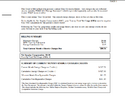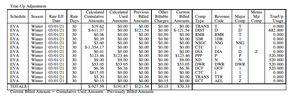I'm on NEM1, so I may have this wrong, but my understanding:
The rate is quoted as something like $0.33/kWh (to make up a number), of which $0.03/kWh is NBC (likewise). So when you import a kWh you get charged $0.30/kWh for energy and $0.03/kWh for NBC. When you export a kWh you get $0.30/kWh credit for energy.
At true up you pay all your NBC charges, plus your net energy charges, if that's a debit balance. If your net energy charges are a credit balance, you lose it, you can't use it against the NBCs (that's the non-bypassable part). And as usual, if your net energy charges are a credit balance, and you are a net kWh exporter, you get a payment per net kWh exported. As a straight payment, that can offset any charges, like your monthly minimum and your NBCs.
Now what I don't know is how NBCs interact with monthly minimum charges. I.e. if there's a $5/month monthly minimum (again to make up a number), or $60/year, and at year end you have $50 of NBCs, with a net credit in energy $ (but a net consumer of kWhs), do you pay $110 or $60 or what?
Cheers, Wayne
There is a monthly minimum charge. You pay that every month. The NBCs go onto the Annual bill
I have no idea what I actually paid on this true up





